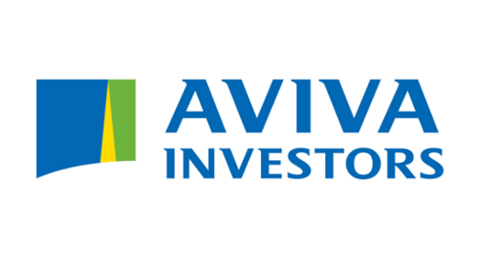Energy Savings Exceed Expectations for Aviva Investors at the Corn Exchange
05 February 2018Energy Savings Exceed Expectations for Aviva Investors at the Corn Exchange
05 February 2018At the Corn Exchange, Manchester, Aviva Investors partnered with Cushman & Wakefield and Carbon Credentials on a programme to improve energy efficiency, cut costs for retail occupiers and reduce CO2 emissions. Following the success of this trial, which exceeded expectations, the programme is now being rolled out to other buildings.
Key Facts
- 42% reduction in common parts energy
- £91,000 forecast annual savings
- Payback within three months
- 317 tonnes forecast annual CO2 savings
Situation
Aviva Investors is a global asset manager. It is the investment arm of Aviva plc, which aims to achieve a 50% reduction in CO2e by 2020 and a 70% reduction by 2030, versus 2010.
The Corn Exchange in Manchester is a Grade II listed building that was converted to a complex of 16 restaurants in 2015. It is owned by Aviva Investors and managed by Cushman & Wakefield. Following the conversion, Cushman & Wakefield identified that energy consumption was much higher than expected.
After initial investigations, Aviva Investors and Cushman & Wakefield agreed to trial the Collaborative Asset Performance Programme (CAPP) from Carbon Credentials. This focuses on optimising technology and engaging with stakeholders to reduce energy use, costs and CO2 emissions, at the same time as maintaining or improving conditions for occupiers.
Actions
The Corn Exchange programme followed a three-stage process:
1. Diagnostic: In December 2016, a site audit was carried out of major equipment and core loads, and a data capture device was installed on the Building Management System (BMS). This device records data every 15 minutes to profile hundreds of data-points over time, including temperature, fan speed, pressure, and status for all plant connected to the BMS. Cushman & Wakefield and Carbon Credentials held an initial meeting with the Building Manager, mechanical and electrical (M&E) contractors and BMS engineers to ensure everyone involved understood the objectives of the programme.
2. Implementation: In January 2017, Cushman & Wakefield and Carbon Credentials met with the building team and BMS engineers to discuss opportunities identified during the diagnostic phase. Together, they produced a list of agreed actions to achieve savings. The Building Manager engaged with occupiers to confirm when they needed fresh air supply from the main Air Handling Units (AHUs) and on changes that might impact conditions in their space during occupied hours. BMS engineers made the necessary software updates. Immediate changes to the BMS settings resulted in significant reduction in runtimes for chillers and AHUs.
Example changes included the following:
- Over-door heater run times reduced by 5.5 hours daily and fan speed reduced to 50% from 100%.
- AHU run times reduced by around 10 hours daily.
- AHU C inverter reduced from 80hz to 50hz.
- Electrical switch room temperature dead band increased to 5oC from fixed set-point to reduce chiller cycling under low load.
3. Monitoring and control: From February 2017, savings have been verified to the international standard IPMVP. With the building now optimised, the CAPP team continues to monitor the site remotely using the BMS data. An online portal automatically emails alerts and reports to the building team and Cushman & Wakefield, if plant runs when not required or at a level not required.
Following the success of the trial, the CAPP was presented back to the managing agents at the Aviva Investors Responsible Property Investment Quarterly Forum and shared as best practice to be adopted more widely. It is now being rolled out to additional buildings.
Financials
- £48,000 verified savings in first five months.
- £91,000 forecast annual savings.
- Payback on investment in first three months.
Benefits
- 42% reduction in common parts energy use in the first five months, compared to the same period in the previous year.
- 317 tonnes forecast annual CO2 savings.
- Extending the lifespan of the equipment through more efficient use of equipment and reduced load, e.g. for main cooling and ventilation plant.
- Occupier peace of mind that energy and equipment are being effectively and efficiently managed.
- Contributing to Aviva Investor’s responsible investment strategy and CO2 reduction targets.
- Accurate apportionment of energy bills for retail occupiers, based on their actual consumption.
- The success of the programme would determine whether this approach would be integrated into Aviva Investors’ management practices.
Challenges and Achievements
COLLABORATION
How to get energy efficiency projects off the ground?
The support of the property owner, Aviva Investors, was vital. Their leadership ensured that the building team prioritised the programme from the outset. Cushman & Wakefield and the Corn Exchange Building Manager were key to bringing all parties together effectively. If the right people are not brought on board at the start of the programme, settings tend to be optimised by one person and then adjusted again by someone else. The Building Manager was also important in engaging with occupiers on agreed actions, so they understood the benefits of proposed changes. On an ongoing basis, the CAPP team provides regular alerts about unusual activity and changes, to enable the building team to take prompt action.
OUT-OF-HOURS
How to optimise efficiency out-of-hours in a multi-let scheme?
Reducing consumption out-of-hours is often a major savings opportunity. However, in multi-let schemes, establishing what comprises ‘out-of-hours’ can be complex. At the Corn Exchange, the opening hours for the restaurants vary significantly, e.g. some open at 10am and others at noon, some close at 10pm and others at midnight, some are open during the afternoon and others are closed. Prior to the efficiency programme, the chillers and AHUs were operating 24/7. By engaging with the restaurant managers to agree what their needs were, based on when staff and customers were on site, the Building Manager was able to agree reductions in the running times for chillers and AHUs that delivered substantial savings, without changes in comfort levels.
Find out more
Michael Borello
Fund Manager
Aviva Investors
Oliver Light
Senior Consultant
Carbon Credentials
Email: oliver.light@carboncredentials.com
Tel: 0203 053 6652
*Please note that the information on this page was supplied by the BBP Member and the BBP assumes no responsibility or liability for any errors or omissions in the content

